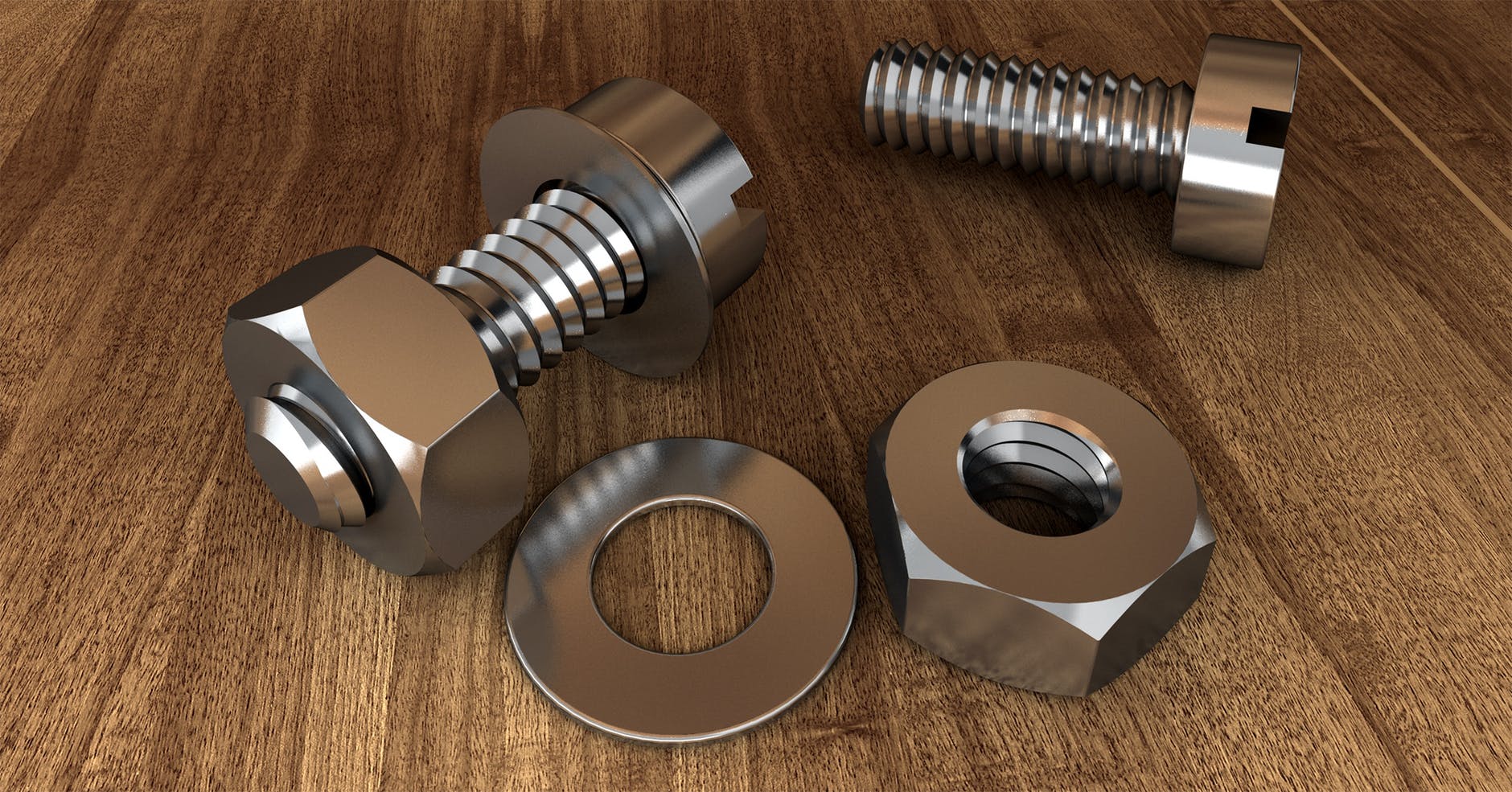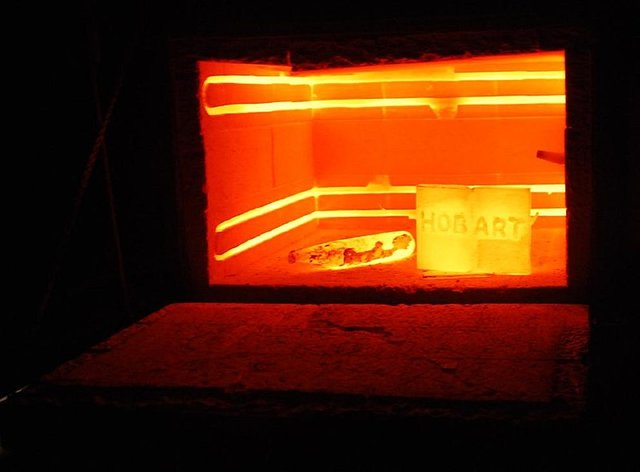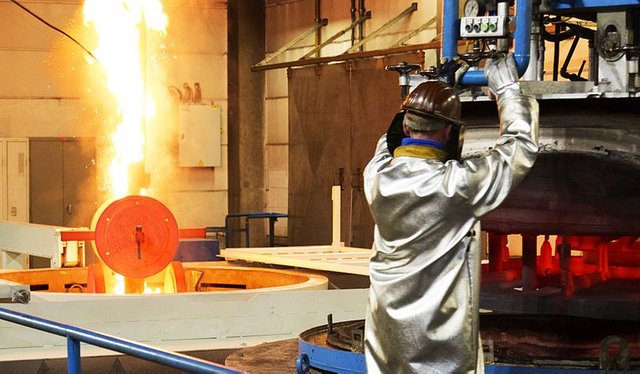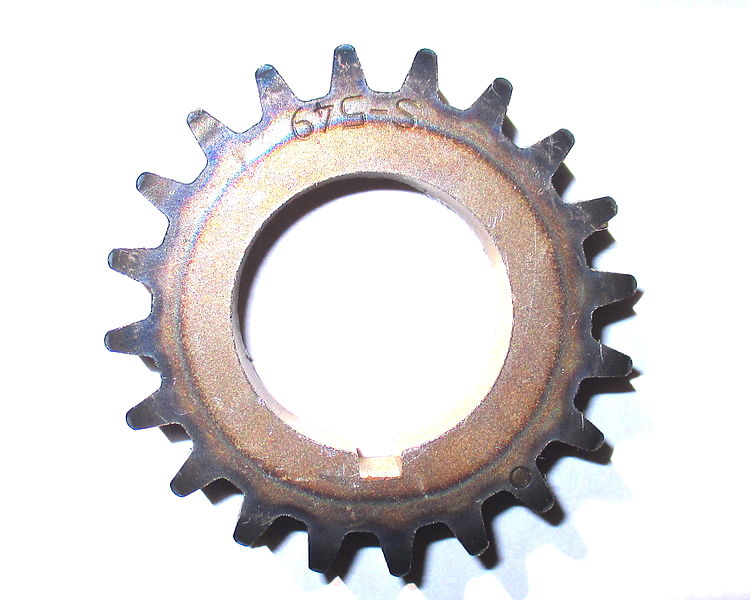Heat treatment; lets talk about how your machine parts are vaccinated after production.
IRON!
If you are a Nigerian (or you live in Nigeria) I am sure that the sight of that word will take your mind to numerous metallic objects. Are you surprised? Please don’t be. While we were younger, anything that is in one way or the other metallic is referred to as Iron! Yeah you would hear us say things like; iron gate, iron sponge, iron pipe etc. but today, all thanks to education, I have learnt that not every metal is Iron. (that memory got me laughing).
Before I climb out of the memory lane, let me share another. I also used to think that iron cannot break – like it is the strongest thing on earth. Well, it didn’t take too long for me to be proved wrong when one day, one of the steel (or Iron :)) bars that were used to raise our water tank broke into two and the tank came crashing down with a loud noise. Well, I can remember vividly because the water spilled and washed away one of my favorite foot wears then (well, what a way to be proved wrong)
In my last post, I discussed the various ways by which machine parts are machined (i.e. removal of parts of the metal to form the geometry needed). Well you can check out the post here if you haven’t. lets go a little further from there.
These machine parts after being fabricated, forged or machined are subjected to different operating conditions; ranging from large compressive or tensile forces to stresses and a host of others. Therefore, the process of designing the machine part is not complete without making the part able to withstand the operating conditions it is meant for else, the design would be an ultimate fail!
Take for instance the simple gear. The teeth of the gear is connected to another which drives or is driven by it, that way, it is subjected to more stresses (load) at the teeth. Therefore, the gear must be able to withstand the load at the teeth before it can pass as a correctly designed part. You can imagine starting your vehicle (I expect you to know by now my obsession with that word) and the next thing you hear is the sound of metal breaking, you check and realize that the crankshaft or something like that has broken into two – that would be so heart breaking.
Fortunately, it is very unlikely for that to happen because something has been done to the machine part before assembly that made it able to withstand the load and stresses it encounters. One of the processes applied to making the machine part or member able to withstand these loading called HEAT TREATMENT.
But first of all, lets do a little background learning about the material used in many machine parts – Steel

image source: pexels under cc0 license
Hey there, I am Mr. Steel!
Contrary to my childhood views, a large number of these metallic things are made of steel. Although some other stuff are made of aluminum, brass, copper and the likes, steel still finds dominance due to some enviable properties such as high tensile strength coupled with low cost.
Steel is actually an alloy of majorly Iron and Carbon with other elements present in smaller percentages. A little deeper into the microstructure of steel, we have Iron which is the base metal in steel, is known to have two allotropes – the Body Centered Cubic structure (BCC) and the Face Centered Cubic structure (FCC). These structures are simply the manner of arrangement of the atoms of the Iron and this structure (or arrangement) is usually dependent on temperature.
Now lets add some carbon!
Adding some other elements (predominantly carbon) to the iron gives it unique properties depending on the percentage composition of these other elements. Take for instance, pure Iron is quite ductile simply because in the microstructure, the Iron atoms can freely slip past one another.
However, the addition of carbon or (and) other elements would simply act as hardening agents and thus prevent the free movement of these atoms. Therefore, these additions have a great effect on the mechanical properties of the material.
That being said, the composition of Iron-Carbon (and other elements) vary in the different grades of steel available depending on the type of properties required.
Why not just mix it all up?
Maybe you are wondering “since the microstructure constituents determine the mechanical properties, why can’t we just mix up the required quantity of carbon and iron and any other elements to produce the type of property for the part we want?”
Well, here is the reason.
Recall that the machine parts do not drop from the sky, they are machined (or forged). In order to be able to machine the part, the metal used needs to be soft enough to allow the cutting tool have its way so as to acquire a precise and fine finish on the part. Having a material that is too hard for a cutting tool to machine would only be a nightmare to the tool, the machine and the machinist. The process of machining also introduces heat and stresses to the material which could alter the initial microstructure of the metal away from what is required as the final form.
As a result of this, Heat treatment is done to the material to attain the required property either at the end of the production of the part or during the production process.
HEAT TREATMENT
If you watch war movies (the ones that show war times before the gun era) where the weapons of warfare employed are majorly swords, you should have encountered one or two scenes where a blacksmith puts a forged sword in a furnace, draws it out when it is red hot and uses a hammer to beat the sword to shape. Then this concept shouldn’t be new to you!
Heat treatment is simply a process (or series of processes) which involve the use of (change in) temperature to alter the physical or chemical properties of a material. Heat treatment is applicable to a wide range of materials including ceramics and glass. But for this post, I would be discussing heat treatment of metals (predominantly steel).
From the name; Heat-Treatment can simply be described as a process where the metal is “treated” with “heat” (oh my! I just repeated the same words. Silly me!) to change its mechanical property without changing its shape.
Heat treatment involves various heating and cooling procedures performed to effect microstructural changes in a material, which in turn affect its mechanical properties.
Recall I said the microstructure of steel (Iron being the chief constituent) is actively affected by the temperature and this in turn determines the mechanical property, well, that’s the main aim of applying heat treatment. We simply want to apply a controlled range of temperature to the metal causing it to acquire a particular mechanical property as a result of that temperature.
Just to clear you doubt, heat treatment does no totally mean adding heat i.e. heating the metal, it could also mean removal of heat i.e. cooling of the metal to attain that particular property required.
The importance of heat treatment in the production of machine parts cannot be over emphasized as it determines the mechanical property of the machine part. Properties such as hardness, toughness, ductility, brittleness, strength, elasticity etc. Without heat treatment, you crankshaft would yield to the stress due to the load on it and break into two after some time (heck! No one wants that to happen).
Enough of the scary illustration, let’s see the various heat treatment processes and their intended results.
ANNEALING
The annealing process is a heat treatment technique which involves heating a metal to a particular temperature and keeping it at that temperature for a certain time before it is then gradually cooled. The rate at which the metal is cooled is usually slow. The desired properties of the annealing process include;
- to reduce hardness
- to reduce brittleness
- to soften the metal
- to relieve the stresses on the material due to previous operations.
- to derive a pre-determined microstructure
The resulting material after annealing usually has an improved machinability (it would be easy to machine the material).
Depending on the type of material and a specific intended microstructure, there are different types of annealing process. Some of the different types of annealing include; full annealing, process annealing, recovery annealing and stress-relief annealing. But they all follow the same pattern of heat to a particular temperature – keep at the temperature – cool slowly
For example, the full annealing process, the cooling is usually at slower rates while in process annealing, the rate of cooling is faster.
Process annealing is usually done when there is still need for the part to be further cold-worked (changing the shape without the use of heat). Recovery annealing is used to improve the toughness of the material as its grain structure is partially returned to its original state. Stress relief annealing as the name implies is used to “relieve” the stresses accumulated in the material in order to reduce the change in dimensions due to the stress.
In order to avoid excess softening of the material by annealing, a process called Normalising is done. This is similar to the annealing process only that it involves faster cooling rates.
QUENCHING
The word “quench” should not be new and yes, it’s the same in this context. Quenching process involves cooling the material at a rapid rate. This cooling can be done with air, oil or water, or some other gas like Nitrogen.
Quenching process is usually done to harden a material. The end result of the quenching process depends on the conditions such as the composition of the material, the quenching medium (and method). The speed of cooling differs from one medium to the other with forced air being the slowest and brine being the fastest.
Then process of quenching occurs in stages. The material is first heated to the desired temperature, after attaining that temperature and ensuring all the parts of the material are evenly heated, the material is then soaked in air, a liquid bath or vacuum. After soaking, the material is then submerged in the quenching medium required for the type of material and composition.
HARDENING
This type of heat treatment as the name implies is use to “harden” the material i.e. increase the hardness of the material. This is done by simply heating the material and keeping it at that temperature for a while before rapidly quenching it.
Hardening is done in different processes having different applications. The processes of hardening include strain hardening, age hardening, martensitic transformation (also known as tempering and quenching)
TEMPERING
The tempering heat treatment process is one which is done to increase the toughness of a material. It is usually done to reduce the hardness that could have been excess after a hardening treatment. It also involves heating the material to a defined temperature for some time before allowing it to col in still air.
Tempering process is done to reduce brittleness (i.e. increase ductility) and increase the toughness of the material. The process of tempering is usually temperature sensitive and thus precision is required in terms of temperature and heating duration.

A heat treating furnace source: wikimedia commons under the Creative Commons Attribution-Share Alike 3.0 Unported license.
SELECTIVE HEAT TREATMENT
There are times when a particular machine part is required to possess slightly different mechanical properties at different parts. take for instance the gear, the surface of the gear is hardened to increase the wear resistance during its operation while the inner parts are not required to be as hard in order for it to be able to absorb the stresses it is subjected to.
The process of applying heat treatment to one part of a material (either to harden or soften it relative to the other parts) is known as selective or differential heat treatment. There are quite a number of techniques and methods used for applying selective heat treatment but they all can be categorized under two groups – selective hardening and selective tempering.
the main aim of selective heat treatment is to create parts that are harder or softer than the others.
Selective heat treatment is done to a variety of materials ranging from knives, swords to gears and crankshaft bearings.
The different types of selective heat treatment are as follows;
- Flame hardening in which the part to be hardened is heated using a flame.
- Differential hardening in which other parts are covered with insulating layers (like clay). That way, different parts of the material receive different degrees of heating at the same time.
- Case hardening which involves the use of the concept of thermochemical diffusion to introduce an element such as carbon or nitrogen to the surface of the material to increase the hardness and thus increase its wear resistance.
THE OPPOSITE OF HEAT TREATMENT?
I am quite sure that this would be a shocker to some of you. As much as we have heat treatment for steel and other metallic and non-metallic materials, there also exists cold treatment (surprised? Please don’t be).
Cold or cryogenic treatment is the direct opposite of heat treatment and it involves the cooling of steel to very low temperatures. Well, that’s what cryogenics mean right?
Cryogenic treatment is usually done to increase the hardness and of course, wear resistance of the material. It also done to reduce the internal stresses in the material.
Ultimately, the benefits of heat treatment cannot be over emphasized as it enables the machine part to be able to withstand the conditions it is subjected to therefore allowing for a longer life span of the part and the machine as a whole. In the case of unfinished parts, heat treatment allows the material to be easily machined for proper finish.
CONCLUSION
In order to get the desired and required mechanical and structural properties of a machine part, the need for heat treatment is presented.
Heat treatment processes are useful for ferrous and non-ferrous metals and also non-metallic materials are not left out.
Although the processes of heat treatment are quite similar, there are some distinctions in the temperature, duration of treatment and the cooling medium which determine the type of property that would be derived. The initial microstructure of the material to be treated is also a determinant. Another point worthy of note is that more than one heat treatment process can be done to the same material so as to acquire some mechanical properties.
Next time you see the blacksmith dipping a piece of metal in hot coal and dipping it in a water or oil bath, there you just experienced heat treatment of a kind.
And that’s all I have for you guys today, hope I was able to add to your pool of knowledge. Feel free to use the comment box to reach me.
Its your steemit mechanic signing out!
REFERENCES
1. Fundamentals of modern manufacturing (textbook) 4th Edition by Mikell P. Groover.
2. Materials science and engineering (textbook) by D. Callister
3. Heat treating
4. What is heat treatment
5. Benefits of heat treatment
If you write STEM (Science, Technology, Engineering, and Mathematics) related posts, consider joining #steemSTEM on steemit chat or discord here. If you are from Nigeria, you may want to include the #stemng tag in your post. You can visit this blog by @stemng for more details.



The properties of a material is a function of what goes on in the microscopic level. The heat treatment is one manner of tweaking the microscopic events within material. Material Engineers have developed so many approaches such that when applied, we can produce some desired properties.
The only issue is that, when one property is achieved, it is always at the expense of another. So we always have to find a compromise.
This was a good read sir.
You have said well sir. Heat treatment is very essential to the mechanical property of a part, that is why i said it can be done at any stage of production and more than one can be done on the same part during production.
Thanks for dropping by
My pleasure
Well done sir.. This has just taken me back to class where i learnt about these things.
But yours was detailed and very explanatory.
I always look forward to your posts.
The other one nko? Not detailed? 😂 😂
Thank you for your kind words
You just took me back to metallurgy class. Metals are fun to work with. You can heat and beat them as you like.
You did a fantastic job writing this article. Kudos to you.
Do you derive fun from beating them?
Of course I do.
The most common application of tempering heat treatment is metallurgical but it can also be used in the manufacture of glass, aluminum, steel and many more materials.
The process of heat treatment involves the use of heating or cooling, usually too extreme temperatures to achieve the wanted result. Nice read sir!
Rightly said sir. Thanks for being here
Welcome sir!
Wow, nice post.
Can remember when I did this topic in MCE 203 (Strength of Materials) which was taken by my HOD, Dr. O.R Adetunji, I had an A in the course. Now I'm seeing new things to improve my knowledge on the topic.
Thanks Man.
Dr. Adetunji was my supervisor, so we have a connection 😁 . You would see a little more of this in Metallurgy course in 500l.
Thanks for reading through.
What a long and informative post! @rhaphelle. I also thought iron cannot break but now I know better.
Haha, blame it on the "Nigerian mentality".
Thanks for being here!
It's my pleasure!
Vaccinated? :)
Well, I agree with the choice of language since it prevents the material from "infection" or damage.
Sincerely i was a little skeptical about that at first but i later concluded it would fit in. Afterall, vaccination is done before the eventuality of the disease.
Thanks for dropping by!
Just a stupid unrelated question: is there any special connection between Nigerian kids and iron? From the first paragraph, I am truly wondering? :)
Very nice post by the way, this remembers me my studies when I was in my early twenties :D
Yeah, people often refer to every metallic as iron here :)
But I guess this is true everywhere in the world :)
Just as greenrun said, every metalic object is referred to as iron here- thats like the default name 😁. Every Nigerian kid is guilty of that although there is no special connection between kids and iron but i can strongly say that almost all locally made toys have "iron" parts.
Its an honor to see your comment on my blog. Thanks for dropping by.
I get that, but I think that this holds for any single country, not only Nigeria. During my childhood, I was doing the same mistake :)
Haha, that explains a lot!
What does it explain?
The fact that it was same for you in your childhood explains that we are not alone in the "iron" misconception
Aah ok thanks! This was not so clear. I was thinking you wanted to connect my iron thingie to what I am today ;)
Lol, are you now an iron-man? 😂
lol maybe the English translation of "lemouth" is "iron man"
Though I don't know much about engineering but atleast by virtue of the content of this aritcle, I am a pseudo engineer.....lol
Great piece bro